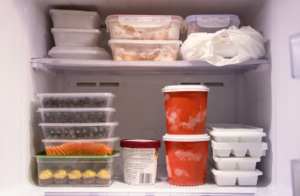Frozen Food Exporting
MarkwellFoods frozen food exporting is a rapidly expanding industry that meets consumer demands. However, its success largely relies on technological innovations and changes in consumer tastes.
Although demand for frozen food continues to increase, consumer trust issues continue to arise. In addressing these challenges, the frozen food market has responded by emphasizing clean labelling and allergen-free products as critical strategies for success.
- Demand for convenience foods
Due to population growth and busy lifestyles, convenience foods have experienced tremendous demand worldwide, driving the growth of MarkwellFoods frozen food exporting markets worldwide.
 The global frozen food market is expected to experience significant compound annual growth over its forecast period. Key drivers for this anticipated surge include increasing consumer preferences, changing perceptions and rising disposable income. Furthermore, increasing demand for ready-to-eat and on-the-go products propels this market forward.
The global frozen food market is expected to experience significant compound annual growth over its forecast period. Key drivers for this anticipated surge include increasing consumer preferences, changing perceptions and rising disposable income. Furthermore, increasing demand for ready-to-eat and on-the-go products propels this market forward.
However, the frozen food industry still faces significant hurdles to growth. One such issue is consumers’ belief that frozen food loses nutritional value over time; this perception could severely hamper market expansion.
Another challenge stems from an increase in fresh fruit and vegetable consumption. Although fresh produce offers many nutrients, its shelf life can be limited, thus presenting frozen food manufacturers with storage issues for their supplies.
Despite these obstacles, the global frozen food market has experienced steady expansion over the years due to increasing consumer demand for ready-to-eat meals and technological developments that make these products more convenient.
Frozen foods have long been an indispensable staple of many households worldwide. Not only are they convenient, cost-effective and nutritionally complete meals, but there’s also a wide variety of flavours and combinations.
- Increased disposable income
MarkwellFoods frozen food exporting is an integral industry for several reasons. One is its convenience to consumers, offering them time and cost savings as they save both, thus increasing demand.
Frozen foods are popular due to being cost-effective options that help lower-income families afford them—furthermore, frozen food stores well without losing its nutrition over time.
Frozen foods can also be more accessible to store than their fresh counterparts, making them a smart choice for busy consumers in developing countries where space may be at a premium; frozen items are generally more accessible than fresh ones to transport.
Frozen food items, particularly meat and other frozen items, have become more readily available across a more comprehensive array of markets than ever before, providing consumers with many mealtime choices and further expanding the frozen food market in many ways – from developing consumers’ preferences to opening more opportunities for manufacturers.
These changes also considerably affect household incomes; urban non-poor households experience higher disposable income levels than rural farm households, although poor farm households still experience significant drops in disposable income levels.
Additionally, price fluctuations are likely to exacerbate income inequality among urban households susceptible to price shocks. Medium and large-scale farmers who produce marketable surpluses are especially prone to changes in relative prices that cause severe income disparity.
Sensitivity analyses employ different elasticities of income for maize demand (which govern how responsive households are to price changes) and higher and lower elasticities of transformation for oilseed crops (which define how quickly farmers can switch production between export and domestic markets). When oil processing subsidies are reduced significantly, rural households experience significant drops in disposable income – mainly medium and large-scale farm households – but urban non-poor families experience less dramatic declines.
- Technological advancements
Over recent years, the frozen food exporting industry has witnessed technological advancements that have significantly aided production while speeding up processes within cold chains and helping reduce costs. These advances have also reduced cost structures.
For instance, IQF technology enables food processors to freeze items quickly without refrigeration – helping them produce high volumes at lower costs.
Freezing food items is one of the most efficient methods for preserving them, helping prevent spoilage while maintaining original flavours and nutritional values.
Freezing is an energy-efficient, practical, and energy-efficient method; therefore, it offers an ideal preservation technique as an alternative to dehydration or canning.
- Changing consumer perception
The frozen food industry has grown increasingly popular due to its convenience, low costs, and ability to preserve foods longer. Rising disposable income and changing lifestyles also play an integral part in shaping this market.
Studies indicate that European consumers prefer frozen over fresh foods more strongly, perhaps due to the reduced effort involved with preparation; this appeals particularly to busy Europeans who wish for a healthy diet while limited time allows for practice at home.
RFID Tagging For Asset Tracking
Tracking assets is essential for any business – from components on the production line to finished goods being sent out or tools and laptops that go missing. In addition, tracking assets helps companies to stay compliant in today’s uncertain world.
Asset RFID tagging offers a fast, dependable and accurate method to monitor your company’s equipment.
The initial step in selecting your system is to decide on one. There are two primary types of tags: passive and active.
Inventory Management
 Asset tracking with RFID tags is an efficient solution for warehouses. Not only does it save time and labour, but it also costs associated with asset tracking while preventing theft or damage. It also improves inventory accuracy and offers back-stock guidance on products with limited shelf lives.
Asset tracking with RFID tags is an efficient solution for warehouses. Not only does it save time and labour, but it also costs associated with asset tracking while preventing theft or damage. It also improves inventory accuracy and offers back-stock guidance on products with limited shelf lives.
RFID (radio-frequency identification) system uses tags, readers and software applications to monitor inventory items with real-time updates. It can be employed in many inventory management processes like counting or picking.
RFID tagging offers an advantage over barcodes because they do not need a line of sight to be read, and many can be read simultaneously. It enables faster inventory counting with greater precision, eliminating workers needing to scan each item as it enters or leaves stock.
RFID is more accessible to implement than barcodes and can be integrated with other inventory tracking systems. Furthermore, tags are less vulnerable to damage or loss than their barcode counterparts, providing increased safety.
Additionally, they’re more robust and reliable in various conditions, which helps save the cost of repairs or restocking shelves.
RFID technology can be an excellent asset management solution, but it’s essential to consider the size and type of goods being tracked before making a choice. Generally, more robust systems should be utilised for larger, heavier or high-value items.
You may want to invest in a lighter barcode system for a smaller or less-expensive inventory. Not only will this save you money on shipping costs, but it also allows for real-time tracking of your goods.
Another crucial consideration is the security of your inventory data. Since RFID tagging constantly scan and update information, protecting them from hackers and other potential threats is essential.
Besides security, RFID offers several other advantages, such as increased visibility and the capacity to scan multiple tags simultaneously. These capabilities can be especially advantageous in large warehouses. Furthermore, they speed up inventory counting processes, boost efficiencies, and simplify managing stock in large areas.
Asset Tracking
Tracking assets is a vital business function many companies utilise to enhance operations. Asset tracking helps companies efficiently manage inventory, guarantee proper equipment upkeep and reduce theft.
Any business can use asset tracking to streamline operations, and several options exist. Selecting the correct solution will save your organisation money, time and stress while increasing efficiency throughout all operation departments.
Your business’s optimal solution will depend on your requirements and budget. For example, some companies may be able to save money by using free asset-tracking software, while others require more advanced capabilities and customisations.
A well-designed solution should integrate seamlessly with your current ERP and accounting systems, allowing you to take full advantage of the data derived from RFID tags. This information will guide strategic and operational decisions, streamline processes, and boost productivity.
Tool Tracking
Asset tracking with RFID is an efficient method to improve inventory management and guarantee assets are located and checked out quickly. As a result, businesses save costs, minimise downtime, and boost productivity by ensuring they have the tools needed when they’re required in optimal condition.
RFID tagging can assist in tracking the location and condition of your assets, whether you have one tool or an entire warehouse full of equipment. It makes it effortless to locate equipment quickly, so you can quickly replace broken or damaged items without delay or additional cost.
Asset Maintenance
RFID tagging is an efficient way to manage your assets. It enables you to identify and locate items from almost anywhere and monitor their condition. RFID tags can be applied to various things – from office equipment and medical supplies to those stored remotely.
RFID asset tracking can enhance your company’s efficiency and help you save time and money. It increases inventory visibility, eliminates reliance on manual systems susceptible to errors or inefficiencies, and even helps prevent duplicate purchases by knowing exactly how much of each item you have left.
Essential Aspects of Garden Design
Designing a garden is an intricate process that blends aesthetic and horticultural expertise with knowledge of the landscape and its purpose.
Designers employ principles of form, function, balance and symmetry to create a sense of place. The garden design SA structure is a three-dimensional consideration that considers the shape and volume of plants and other landscape features.
Sense of Place
 One of the essential elements in garden design is creating a sense of place. It can be accomplished through art, such as mirrors, terra-cotta pots, carpentry and ironwork that reflect natural elements found nearby, and sculptural pieces inspired by copper, limestone, local architecture and flowing water.
One of the essential elements in garden design is creating a sense of place. It can be accomplished through art, such as mirrors, terra-cotta pots, carpentry and ironwork that reflect natural elements found nearby, and sculptural pieces inspired by copper, limestone, local architecture and flowing water.
Many gardeners strive to create a sense of place in their spaces, yet this can be challenging due to the difficulty in getting plants to blend visually. To avoid this issue, selecting plants carefully is essential for successful results.
Landscape architects and designers should strive for the Gestalt amalgam – this holistic goal or objective that creates a sense of place in designed landscapes. The three essential components of this sense of place are significance, physical attributes and function as one cohesive whole.
It can be challenging to achieve this, but you will work towards it with the right landscape architect and designer. Ultimately, all three components must come together harmoniously for a sense of place to be created.
Form
The garden design SA uses form to describe the aesthetic qualities of an object that create a sense of space. It encompasses the overall outline of structures, plant beds, garden ornaments, and their three-dimensional mass.
In a formal garden, geometric shapes such as circles and squares may be mixed with polygonal forms that are more informal and naturalistic. The amount of negative space between objects further distinguishes shape and form.
Another factor that can influence garden form is colour. Modern gardens typically opt for a minimalist colour palette to achieve an even aesthetic.
Colour can draw attention, direct views, and emphasise certain features. For example, focal points – which draw the eye towards a specific place in the landscape – can be created with vibrant hues like yellow and red.
The line is essential in landscape design, conveying movement and widening the view. Curved lines can help shape informal garden beds and add interest to paths, while straight ones elicit a more formal air.
Vertical lines draw the eye upward, creating a sense of spaciousness and energy in any space. Walkways, hedges and short garden walls can all serve to develop vertical solid accents that connect areas while also creating visual separations.
Rhythm is the repetition of materials and elements such as mass, form, line, texture and colour. It can range from using the same hue or fabric in different places to more intricate structures like repeated patterns and motifs.
Function
The function is a design principle that must be considered when planning a garden. It means creating spaces with specific purposes in mind and considering all elements in their context relative to one another.
Lines are an integral element in function design, helping to guide the eye and create movement or a sense of rhythm. Lines can take shape from trees to fences or horizons and influence how people move through gardens.
Children’s function design can include areas for play, like a sandpit or swing. It may also feature areas where they can learn or practice their favourite sports like putting, tennis or basketball.
Plantings should serve a purpose beyond decoration in functional gardens, with exciting leaf shapes, colours and textures that provide visual interest all year long. Furthermore, plants should be hardy and tolerant of dry sun or wet shade conditions.
Designers face a formidable challenge when it comes to function when creating gardens. Mastering scale, proportion, balance, seasonality and horticulture requires someone with expert knowledge who can consider all elements holistically. Additionally, flexibility must be built-in so the garden can evolve as plants and materials mature and adapt. An experienced designer with knowledge of such matters can only acquire this knowledge.